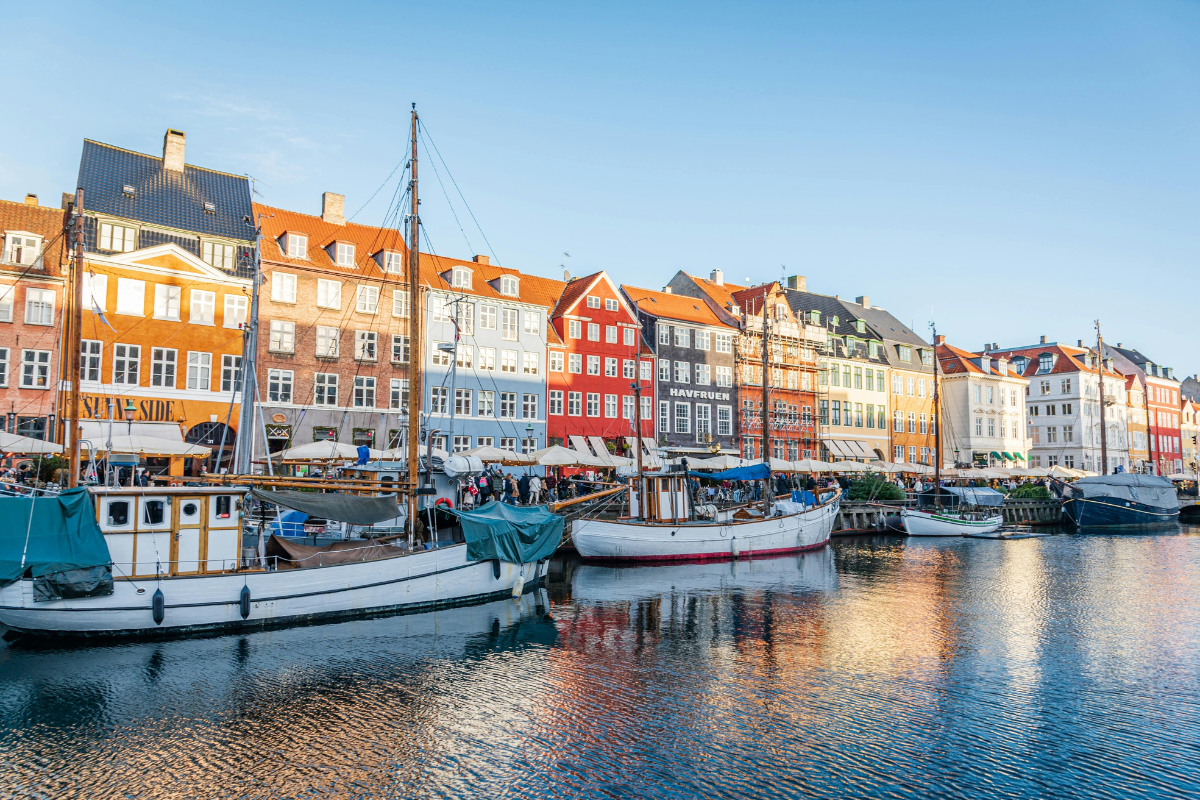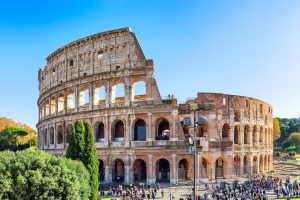Copenhagen, the capital of Denmark, is a place where royal history meets modern design – all wrapped in a relaxed Scandinavian atmosphere. Here, you cycle past palaces, sip stylish coffee by the water, and find a touch of hygge – the Danish concept of coziness – around every corner. The city impresses with its versatility: whether you’re a culture enthusiast, a shopping lover, or an architecture fan – Copenhagen offers the right experience for every taste. And the best part? The city is perfect to explore on foot or by bike.
Top Attractions in Copenhagen
Nyhavn
Nyhavn is probably Copenhagen’s most famous postcard motif – and for good reason. The colorful 17th-century gabled houses line the historic harbor canal, where old wooden ships gently bob on the water. Today you’ll find a variety of restaurants and cafés here with perfect waterfront views. Ideal for a break with smørrebrød and the sun on your face!
Fun Fact: The famous Danish fairy tale writer Hans Christian Andersen lived in three different houses in Nyhavn – including No. 20.
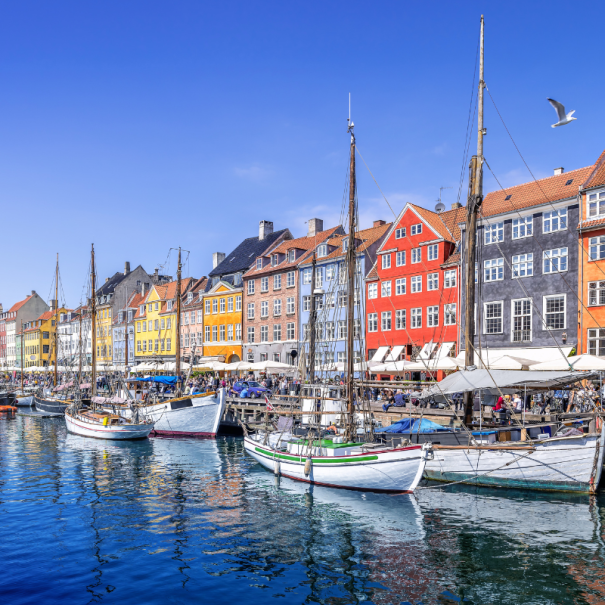
Amalienborg Palace
Amalienborg is the official residence of the Danish royal family – and a prime example of Danish Baroque. The daily changing of the guard by the Royal Guard at noon is particularly worth seeing. With a bit of luck, you might even catch a glimpse of the royal family when the flag is flying above the palace. Tip: The expansive square is also perfect for beautiful photos.
Fun Fact: Although the royal family lives in Amalienborg, there is no walled-off palace garden – the grounds are freely accessible, and the Danish Queen is sometimes even spotted strolling in the area. Royalty at eye level!
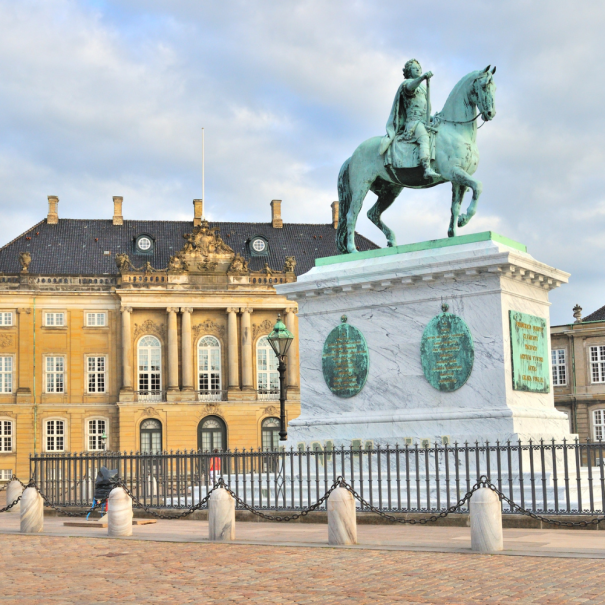
The Little Mermaid
She is small – really small – but an absolute must: The Little Mermaid statue is a tribute to Hans Christian Andersen’s fairy tale of the same name. Since 1913, she has sat on her rock at the Langelinie Pier, attracting visitors from all over the world. A quick photo is a must-do – and then it’s on to the city’s hidden treasures.
Fun Fact: The mermaid has been through quite a lot: she has been decapitated several times, painted, and even pushed into the water – yet she always returned.
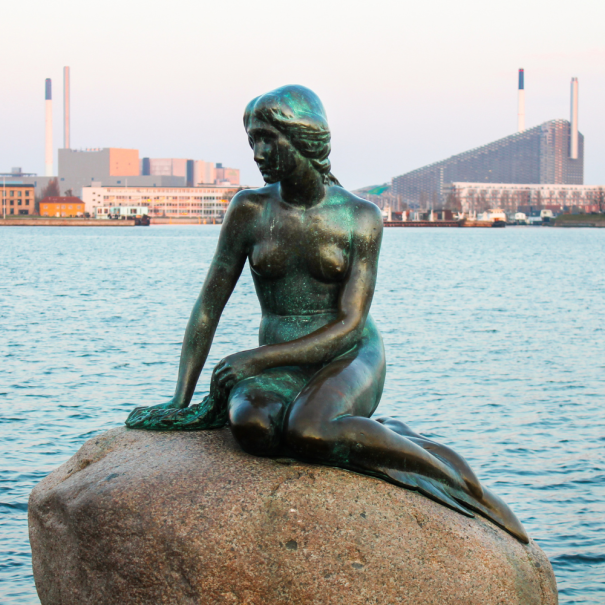
Tivoli Gardens
Tivoli is one of the world’s oldest amusement parks (since 1843!) – and one of the most charming. Located right in the city center, it offers a fairytale mix of rides, nostalgic lighting, and open-air concerts. The park is especially atmospheric in the evening when thousands of lights transform it into a romantic sea of lights.
Fun Fact: Walt Disney visited Tivoli several times in the 1950s – and drew inspiration for his own amusement parks! Some say that without Tivoli, Disneyland might never have existed.
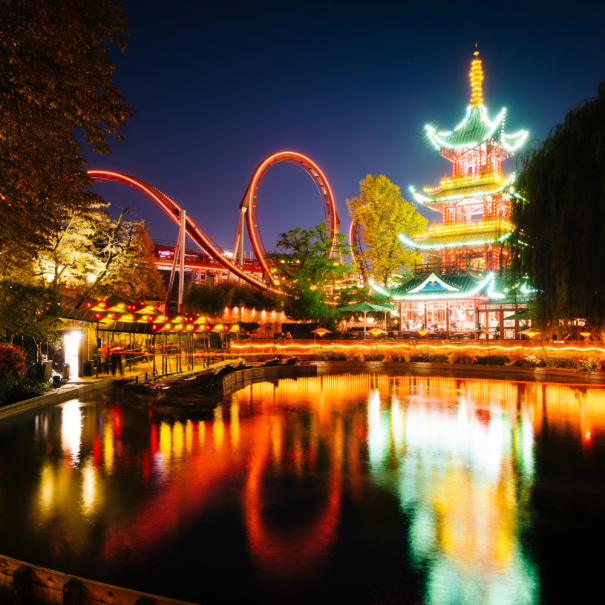
Christiansborg Palace
Christiansborg is Denmark’s political heart – it houses not only the Parliament but also the Supreme Court. Parts of the palace, including the magnificent reception rooms, the royal stables, and the palace kitchen, are open to the public. Particularly impressive are the underground ruins of earlier castles directly beneath the palace.
Fun Fact: Christiansborg is the only building in the world where all three branches of a country’s government are housed – Parliament, Government, and Supreme Court are all under one roof. Practical, right? At least it saves a few official trips.
Rosenborg Castle & The King’s Garden
This Renaissance jewel is located in the idyllic King’s Garden (Kongens Have). Inside the castle, you can marvel at the Danish Crown Jewels – it doesn’t get any more dazzling! The garden is popular with Copenhagen locals for picnics or sunbathing on the grass. In spring, all of Copenhagen seems to bloom here.
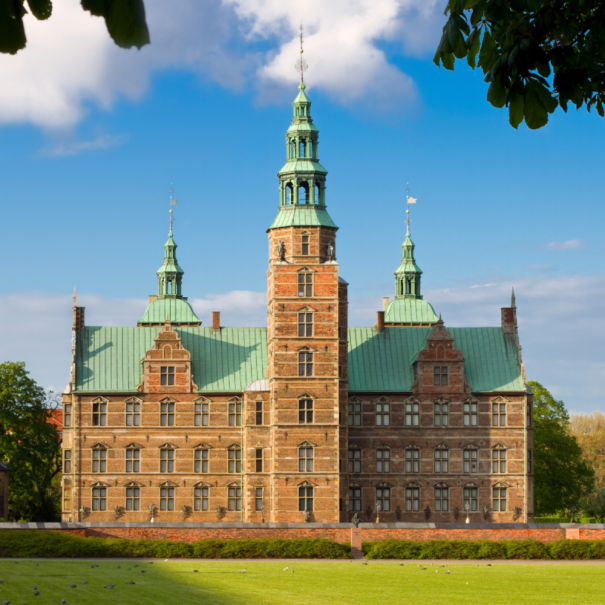
Best Scenic Viewpoints
Rundetårn (Round Tower)
The 34.8-meter-high Round Tower offers one of the best views over the rooftops of the old town. The way up is not via stairs but along a spiral ramp – a true walk with panoramic guarantee. At the top, it’s worth peeking into the adjoining observatory. If you’re brave, you can also look through a glass floor down into the interior of the tower.
Fun Fact: In 1716, Tsar Peter the Great rode his horse up the spiral ramp of the Round Tower – his wife, Catherine I, is said to have followed him in a carriage. A Baroque power couple on a Copenhagen sightseeing tour!
Church of Our Saviour (Vor Frelsers Kirke)
Those unafraid of heights should not miss the climb to the top of this Baroque church. The last few meters take you around the outside of the tower – not for the faint-hearted, but the view of Christianshavn and the harbor is spectacular.
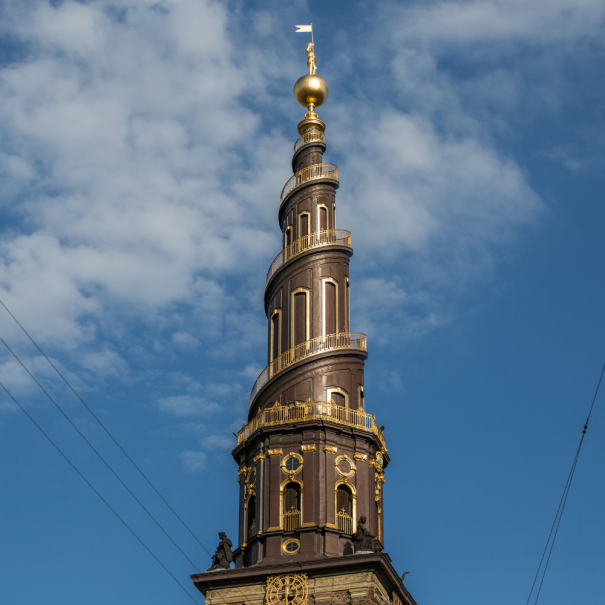
CopenHill (Amager Bakke)
CopenHill is truly unique – a ski slope on the roof of a waste-to-energy plant. From here, you’ll have a panoramic view of Copenhagen’s skyline.
Fun Fact: CopenHill is not only a ski slope on top of a power plant – it also has the world’s highest artificial climbing wall attached to a building! At 85 meters high, it’s a real highlight for climbing fans with nerves of steel.
Culinary Highlights for Food Lovers
Restaurant Höst
Scandinavian design meets Nordic cuisine: at Restaurant Höst you’ll enjoy regional ingredients in a stylish atmosphere. Ideal for a romantic dinner or a special evening. The changing menus are creative and seasonal.
Torvehallerne
The market halls near Nørreport are a paradise for foodies. From fresh oysters to smørrebrød to Danish craft beer – here you’ll find everything your heart desires. Perfect for a snack in between or an extended gourmet stroll.
Reffen – Copenhagen Street Food
Located right by the water, this creative street food market has over 40 international stalls. Sustainability is the focus here – from reusable dishes to solar energy. The vibe? Hip, colorful, and always a bit like a festival.
Restaurant Kødbyens Fiskebar
Fresh seafood in the trendy Meatpacking District – at Fiskebar, oysters and fish take center stage, paired with good wine and cool industrial charm. Especially popular with locals!
Café Atelier September
The stylish Café Atelier September in the heart of Copenhagen is a favorite of the design community. Minimalist interiors meet lovingly prepared coffee and breakfast classics. Ideal for a relaxed breakfast or coffee stop.
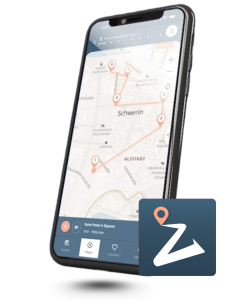
Discover 70+ cities worldwide with professional audio guides – and counting! Thanks to integrated navigation, you’ll easily find your way, even without an internet connection. Whether it’s famous highlights or hidden gems – Plazes brings exciting tours and vivid stories straight to your smartphone. Completely free and no registration required. Download now and get started!
Insider Tips & Hidden Gems
Assistens Cemetery
It may sound macabre, but it’s one of the city’s most peaceful places: Assistens Cemetery is not only the final resting place of Hans Christian Andersen but also a popular spot for walking and contemplation. Melancholy meets Danish idyll.
Superkilen Park
A public park full of international elements – from a Moroccan fountain to Japanese swings. Superkilen in the Nørrebro district is a colorful, urban playground for young and old and a real statement for diversity.
Bakkehusmuseet
A charming little literature museum in Frederiksberg that offers insight into the life of writer K.L. Rahbek. The garden is a quiet oasis with a café and roses – almost like visiting a Danish poet friend.
Cisternerne
An underground museum for contemporary art in a former water reservoir beneath Søndermarken Park. Dark, cool, and a little mysterious – the perfect contrast to the sunny city above.
Museums for Culture and History Enthusiasts
National Museum
Denmark’s largest cultural history museum tells the story of the country from the Stone Age to modern times. Particularly impressive: the bog bodies and Viking finds.
Statens Museum for Kunst (SMK)
Denmark’s national gallery offers an impressive collection of European art – from Matisse to Rubens. The architecture alone is worth a visit, and the light-filled halls make the museum experience especially pleasant.
Glyptoteket
This art museum was donated by Carl Jacobsen, founder of Carlsberg. Ancient sculptures, French Impressionists, and a winter garden with palm trees make Glyptoteket a true feel-good museum.
Fun Fact: Real palm trees grow in Glyptoteket’s winter garden – right in the middle of Copenhagen! The light-filled room with tropical flair is heated in winter and so cozy that locals often use it as a romantic retreat. Culture meets coziness!
Arbejdermuseet (Workers’ Museum)
The Workers’ Museum offers fascinating insights into the lives of Denmark’s working class in the 19th and 20th centuries. Authentic, moving, and educational – especially recommended for anyone who wants to see history from a different perspective.
Photospots in Copenhagen
- Nyhavn at sunset – colorful houses, boats, and golden light. A must-see.
- Superkilen Park – ideal for creative and colorful shots.
- CopenHill rooftop – panoramic views with a futuristic touch.
- Botanical Garden – especially the Palm House is a dream for Instagram fans.
- Our Saviour’s Church from above – only for the brave, but the best view awaits.
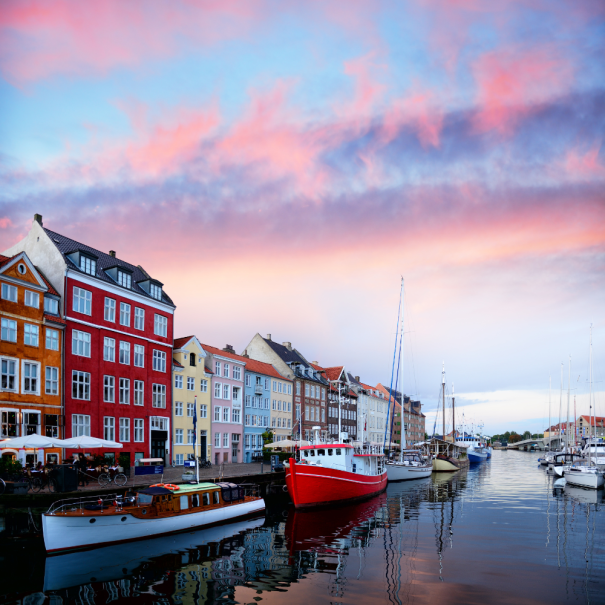
Shopping & Souvenirs
Copenhagen is a shopping paradise – whether for design, fashion, or culinary treats. The best-known shopping street is Strøget – one of the longest pedestrian zones in Europe. Here, well-known brands such as HAY, Royal Copenhagen, and Illums Bolighus are lined up.
For a more individual experience, head to Vesterbro, Nørrebro, or the Jægersborggade district, where small boutiques sell sustainable fashion, local design, and handmade products. Popular souvenirs include Danish licorice variations (e.g., from Lakrids by Bülow), Scandinavian-style candle holders, or artistic posters with minimalist city maps.
Tips for Cruise Passengers
Copenhagen has several modern cruise terminals, including Ocean Quay (Nordhavn) and Langelinie. From there, it’s easy to reach the city center.
Many cruise lines offer shuttle bus transfers to the city center (e.g., to the main train station). Alternatively, the M4 metro is just a few minutes from Ocean Quay.
You can also reach the main sights easily with hop-on hop-off buses. These usually start right at the terminals near the cruise ships and give you a great overview of the city’s highlights.
Copenhagen is extremely bike-friendly – with a rental bike, you’ll be fast and flexible.
If you prefer to travel by car, you can use services such as “Taxi 3×35” or Bolt. These are good alternatives to Uber, which does not exist in Denmark.
Tips for Solo Travelers
Copenhagen is considered one of the safest and friendliest cities in Europe – perfect for solo travelers. The city is well organized, easy to navigate, and offers plenty of opportunities to meet locals or fellow travelers.
Getting around is no problem. The metro runs 24/7, and tickets are easily available via the DOT app or at ticket machines. This way, you can easily reach the main train station, where you’ll also find a tourist information center. Alternatively, check out their website.
Want some company? In Copenhagen, it’s easy to meet new people. Places like the Absalon Hotel offer communal dinners at long tables – a great way to start a conversation.
But even if you explore on your own, the city is easy to enjoy. There are numerous free walking tours, often starting at City Hall.
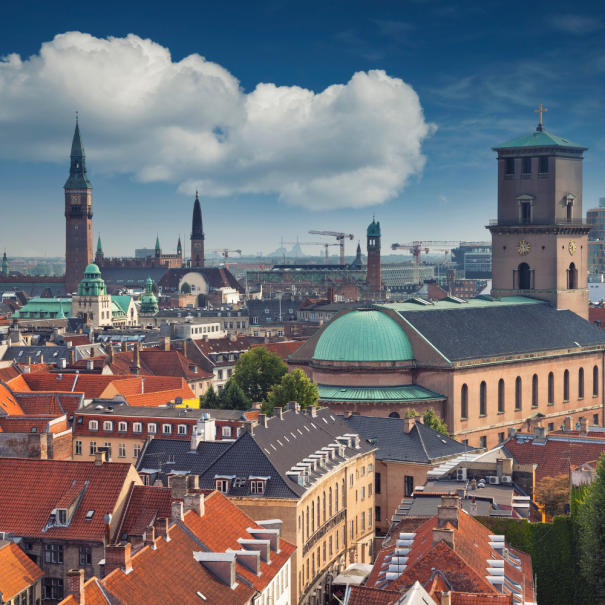
Conclusion
Copenhagen is a city you simply have to love – not because of a single attraction, but because of its charming mix of design, history, cuisine, and laid-back atmosphere. Whether you’re enjoying the view from the Round Tower, strolling through Nyhavn, or simply watching life go by in a café – this city slows you down without ever being boring.
With its diverse attractions, green parks, and creative neighborhoods, Copenhagen is the perfect destination for explorers, foodies, and anyone who needs a little more hygge in their life. Skål!
FAQs
1. How much time should you plan for a visit to Copenhagen?
If you only want to see the most famous highlights such as Nyhavn, the Little Mermaid, and Amalienborg Palace, two to three days are enough. For a deeper immersion into Danish culture and modern city life – for example, by visiting alternative neighborhoods like Nørrebro or Vesterbro – you should ideally plan five days or even a full week.
2. Can you explore Copenhagen in one day if arriving from a cruise port?
A day trip allows for a first impression and the chance to see the main attractions – Nyhavn, Amalienborg Palace, and a quick detour to Christiania are doable. However, there is little time to truly soak up the city’s relaxed lifestyle. Those who want to discover more should plan at least two days on site.
3. Should you book tickets online in advance for popular attractions?
Especially at major attractions such as Rosenborg and Amalienborg Palaces as well as the popular Tivoli amusement park, queues can form during peak season. Online tickets or “skip-the-line” options help reduce waiting times. Some museums and churches are free to enter, but they can also get quite busy, particularly in summer and on weekends.
4. When is the best time of year to visit Copenhagen?
Copenhagen is generally worth visiting all year round. In summer (June to August), longer days, many open-air events, and street festivals draw visitors – but so do more tourists. Those who prefer it quieter and cooler should aim for spring or autumn, when the city is either bursting with fresh greenery or glowing in colorful autumn hues. Winter can be cold, but hygge and festive lights create a very special atmosphere.
5. How accessible is Copenhagen for people with limited mobility or strollers?
Copenhagen is considered very bike- and pedestrian-friendly, which often translates into accessibility. Most public transport is well developed and barrier-free, both on buses and the metro. The main attractions are generally also equipped with ramps or elevators. Nevertheless, in older districts or historic buildings, there may occasionally be limitations, so it’s advisable to check with the respective provider in advance.

